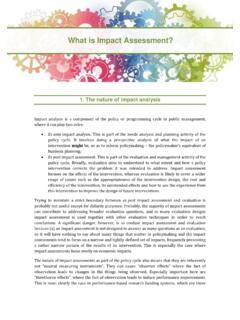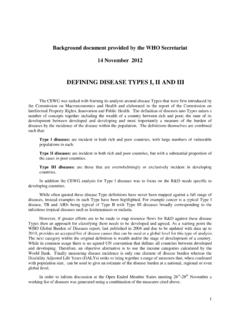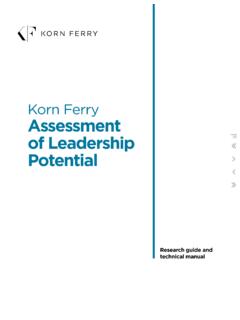Transcription of IMPROVING WORKPLACE CULTURE THROUGH Evidence …
1 MAY 2021 Evidence -Based Diversity, Equity and Inclusion PracticesIMPROVING WORKPLACE CULTURE THROUGHAUTHORS:Stephanie J. Creary, PhDNancy Rothbard, PhDJared ScruggsMOH FOUNDATION APPLIED INSIGHTS LAB / MBA RESEARCH TEAM MEMBERS:WG 20: Elena Mariscal, Olivia Moore, Natalia Villarm nWG 21: Valerie Chia, Georgia SweeWG 22: Andrew Sparks, Ayanna WarringtonEvidence-Based Diversity, Equity and Inclusion PracticesIMPROVING WORKPLACE CULTURE THROUGHR eport Publication Date: May 2021, The Wharton School of the University of PennsylvaniaImproving WORKPLACE CULTURE THROUGH Evidence -Based Diversity, Equity and Inclusion PracticesCThe Wharton SchoolAcknowledgements.
2 1 Introduction ..2 Results from the Distributed Workforce Sample ..8 AFFECTIVE COMMITMENT ..9 BELONGING ..11 HELPING BEHAVIOR ..13 INCLUSIVE CLIMATE ..15 RESPECT ..17 PROHIBITIVE VOICE ..19 PROMOTIVE VOICE ..22 SUPPORTIVE VOICE ..24 WORK ENGAGEMENT ..27 BURNOUT ..29 JOB SATISFACTION ..31 TURNOVER INTENT ..33 Advice for Middle Managers ..36 Further Reading ..39 Results and Insights from the Case Study Companies ..40 Closing Reflection ..45 Appendix A: Methodology ..46 Appendix B: Distributed Workforce Bar Charts ..49 Appendix C: Additional Summary of Significant Differences in Outcomes and Access to Practices by Racial/Ethnic Group.
3 56 TABLE OF CONTENTSI mproving WORKPLACE CULTURE THROUGH Evidence -Based Diversity, Equity and Inclusion Practices1 The Wharton SchoolThe research and team was led by Stephanie Creary , assistant professor of management at The Wharton School of the University of Pennsylvania. The research team included Nancy Rothbard , Wharton management professor, Jared Scruggs, Wharton management doctoral candidate, and Moh Foundation Applied Insights Lab/Wharton MBA student research team members Elena Mariscal, Olivia Moore, Natalia Villarm n, Valerie Chia, Georgia Swee, Andrew Sparks, and Ayanna Warrington. The insights expressed in this report are those of the authors and research team members.
4 We are grateful to the many members of the Wharton community who supported this research in different ways: Tiffany Smith W 17, Megan O Malley, Jing Peng, Laura Zarrow and her team at Wharton People Analytics, Matthew Diephuis WG 20, Shanae Davis WG 21, and Ayanna Kennedy WG 21. We thank our colleagues at the McNulty Leadership Program including Mike Useem , Jeff Klein, and Umi Howard for their support as well. The research on which this report is based was funded in part by The Wharton School Dean s Research Fund and with additional financial support from DiversityInc. We would like to thank Moody s Corporation and DiversityInc, particularly CEO Carolynn Johnson, for providing financial support that allowed us to develop and disseminate this report.
5 We are grateful for their financial contribution and the opportunity it has provided for us to share this research with industry experts and the broader public. This report was written solely by Wharton, and it is responsible for the content and information contained herein. We are also grateful to Rachel Kipp and Hanna Manninen for their expert editing and design of this report. While we focus this report on results from a subset of our research participants (n=1,628), we thank the more than 6,600 working adults around the world who have participated in the Inclusion & Belonging Assessment to WORKPLACE CULTURE THROUGH Evidence -Based Diversity, Equity and Inclusion Practices2 The Wharton SchoolDEI as a Business Imperative: Changing WORKPLACE CultureWe have been living THROUGH a time like no other in modern history.
6 Over the last year, people around the world have simultaneously faced a global pandemic responsible for more than million deaths1; observed and in many cases participated in the world s largest work-from-home experiment2; and witnessed a global movement to end systemic racism and police The enormity of these combined events has motivated company leaders to consider more closely the toll they have taken on employees lives. Acknowledging the disparate impact on certain segments of the workforce, including women, people of color,4 and front-line workers has motivated leaders to commit to diversity, equity, and inclusion (DEI) more intentionally5 and become more transparent about their company s DEI-related Such commitment and transparency on the part of company leaders has not been absent of public demand, however.
7 Rather, regulators have argued that creating more diverse and inclusive workplaces may reduce 1 Johns Hopkins University & Medicine (2021). 2 Banjo, S., Yap, L., Murphy, C., and Chan, V. (Feb. 2, 2020). Coronavirus forces world s largest work-from-home experiment. Bloomberg. 3 Kirby, J. (June 12, 2020). Black Lives Matter has become a global rallying cry against racism and police brutality. Vox Media. 4 Throughout this report People of Color (POC) refers to people identifying with any of the following racial/ethnic groups: Asian/Pacific Islander, Black/African American, Hispanic/Latino, Multi-Racial, and Native American/Native Alaskan.
8 5 PwC. (2021). 6 Deloitte (2021). Diversity, equity, and inclusion transparency report. INTRODUCTIONTo meaningfully prioritize diversity, equity, and inclusion in the WORKPLACE is not only the right thing to do it is a business WORKPLACE CULTURE THROUGH Evidence -Based Diversity, Equity and Inclusion Practices3 The Wharton SchoolINTRODUCTION discrimination and protect consumers and Investors have asserted that greater diversity in the WORKPLACE and board room may drive long-term sustainable firm financial And, studies show that more than 70 percent of job seekers are looking to work for a company with dedicated commitment to Further, as diverse audiences have demanded greater DEI investment and progress.
9 Leaders have begun to alter how they frame their company s approach to diversity. Namely, for more than 30 years, the business case for diversity has guided investment in diversity in the Specifically, the business case rationalizes the need for diversity in terms of its positive relationship to innovation, better decision-making, and more favorable financial Yet, as reaching more diverse audiences continues to be of concern, leaders are starting to think more broadly about DEI as a business 7 116th US Congress (2020). - Promoting diversity and inclusion in Banking Act of 2020. Financial Conduct Authority (2020). Our role as a regulator: Why diversity and inclusion matter in financial services.
10 8 Trager, L.(2021). Why gender diversity may lead to better returns for investors. Lacaille, (2020). Diversity strategy, goals, & disclosure: Our expectations for public companies. 9 McKeon, K. (2020). How to develop an employer branding strategy in 2020. The Manifest, 10 McKinsey (2020). Diversity wins: How inclusion matters. May 19, 2020 report. See also.: Lorenzo, R., Voigt, N., Tsusaka, M., Krentz, M., and Abouzahr, K. (2018). How diverse leadership teams boost innovation. BCG Henderson Institute, January 23, OF PRACTICESPRACTICE CATEGORIESDESCRIPTIONEXAMPLES FROM THE I&B ASSESSMENTD iversity Recruiting InitiativesIncreasing the representation of underrepresented groups External recruiting platforms to recruit members of underrepresented communities ( , blogs, online postings, etc.)




